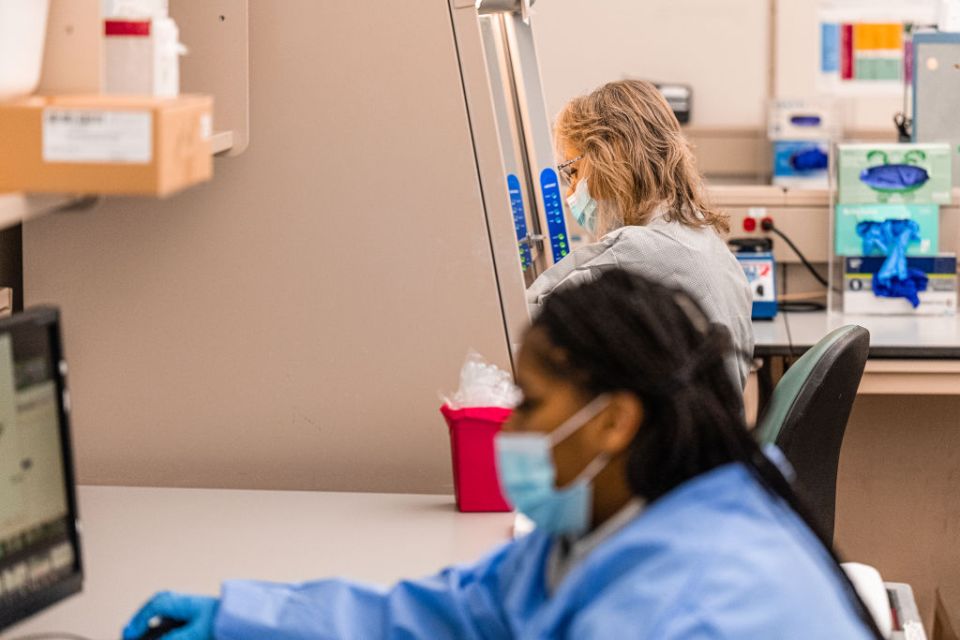The Alzheimer’s ‘wonder drug’ isn’t the miracle we want it to be

This week, a new miracle drug for Alzheimer’s has raised the hopes for millions of families, but it might have done so with false promise, writes Michael Young.
This week has seen huge publicity around the clinical trial for donanemab, a new drug for Alzheimer’s Disease. It’s being touted as a potential miracle cure. Even former prime minister David Cameron wrote a piece yesterday saying the news made him emotional. But much of this “good news” has been slapped on front pages without interrogating the data, delivering a dash of hope to families who have watched their loved ones slip away as a result of the disease.
As much as we might not want it to be true, closer examination reveals that these assertions simply aren’t grounded in scientific reality, giving false hope to the one million people affected by this disease in the UK, and their families.
The promotion of donanemab’s efficacy also spotlights a more systemic problem in the reporting of scientific trial results. Journalists without a deep understanding of the science report “findings” without scrutiny, resulting in the miscommunication of research outcomes to the public.
In the case of donanemab, an examination of the data shows the proclaimed benefits to be negligible. The team has cherry picked their results, presenting only the groups that responded best to the drug. Even in these groups, the outcomes are not at a level noticeable by patients or their families.
Alzheimer’s severity is measured on a scale of 0 to 144, with 0 being the worst. In the group that responded “best” to donanemab the patients worsened during the trial from 105.7 to 99.5. During the same time, those on the placebo worsened from 105.5 to 96.23 – a difference of just 3.25 points. The research paper itself states that a “meaningful change” would be 5 points. To claim that this is a 35 per cent improvement is hugely misleading. The denominator should be the placebo score – just 3.4 per cent improvement.
Furthermore, the drug comes with alarming side effects that arguably outweigh any minimal benefits the drug might offer. 25 per cent of people who took the drug suffered from brain swelling or bleeding.
The theoretical basis for this class of drugs is not without controversy. It rests on the “amyloid plaque hypothesis” for Alzheimer’s, which suggests that you can cure the disease by removing these stray protein build-ups from the brain. This hypothesis came under significant scrutiny after it was discovered last year that the foundational research used to develop this was based on faked brain-scan images.
Professor Alberto J. Espay, Professor of Neurology at the University of Cincinnati, wrote about this, “We are treating Alzheimer’s as if it were cancer. It isn’t…Amyloid is a normal reaction to pathogens of various kinds. By shooting the messenger, we only create the illusion of success.”
Given the number of people in the UK whose lives are blighted by Alzheimer’s, it’s understandable that we want some good news about a potential treatment. But the disproportionate coverage given to these claims has dangerous implications. People who have read these articles will be sorely disappointed when this drug most likely doesn’t become available. It’s improbable that NICE (the organisation responsible for approving new treatments in the UK) will recommend this treatment based on a Quality-Adjusted Life Year assessment. But the worse outcome would be political pressure leading organisations to recommend treatments that shouldn’t be prescribed. Health Secretary Steve Barclay has already announced a team to accelerate the drug’s roll-out.
Alzheimer’s is a terrible degenerative disease and undoubtedly needs more research. This makes it all the more important that research and reporting is robust. The narrative around donanemab illustrates a need for a more responsible approach to the reporting of scientific findings. Media, scientists, and politicians all bear a collective responsibility to ensure the accurate communication of research outcomes. Failure to do so misleads the public and could have dire consequences. In the long run, it also erodes public trust in the scientific process.